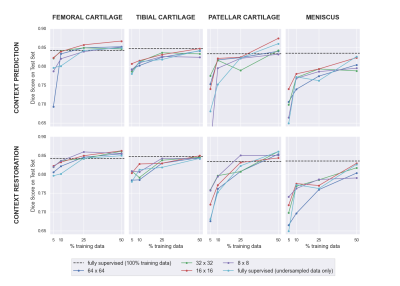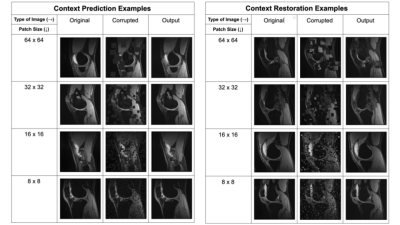Jeffrey Dominic1, Arjun Desai1, Andrew Schmidt1, Elka Rubin1, Garry Gold1, Brian Hargreaves1, and Akshay Chaudhari1
1Stanford University, Stanford, CA, United States
1Stanford University, Stanford, CA, United States
Self-supervised learning can leverage unlabeled images to improve deep learning segmentation performance in scenarios with limited labeled training data, especially for tissues facing class imbalance challenges and low prevalence.

Figure 2: A summary of the downstream performance of the SSL networks with both pretext tasks (context prediction and restoration). In most data-limited scenarios, SSL pre-training improved results compared to only supervised training on the same data. The impact of SSL was larger for smaller tissues such as the patellar cartilage and meniscus. Smaller patches also provided improved performance.
